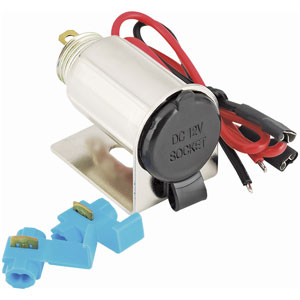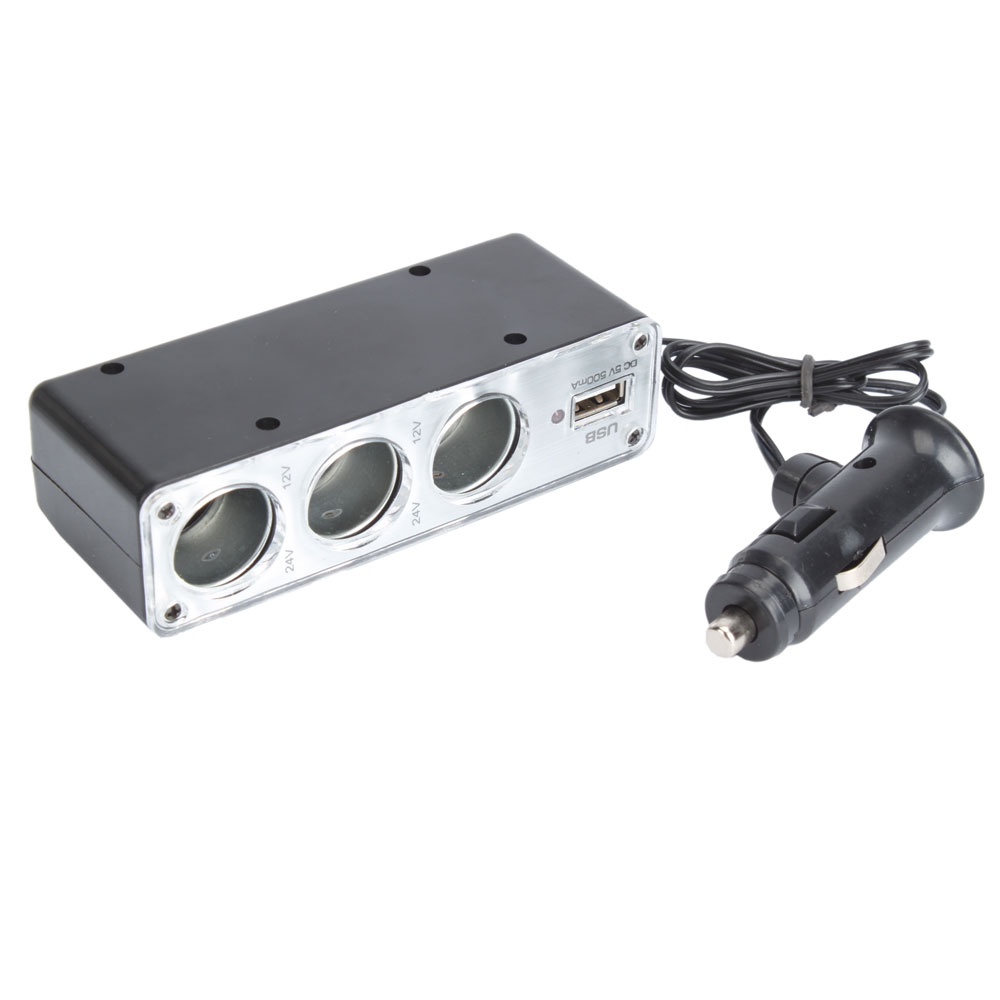In the old days, car entertainment often consisted of listening to the radio (if you had one) and playing road trip games (like I Spy and Punch Bug). Today, you can still do those things and so much more. Practically everyone has a mobile phone and many of these are often smart phones. Besides phones, common personal electronic devices include GPS navigation, mp3 players, tablets, and e-readers . People with traveling with children often have DVD players for their entertainment while older kids might travel with a laptop computer.
Powering these devices is most commonly done through the car's cigar/cigarette lighter receptacle. This is typically powered by a 20 A circuit and is often always energized so it does not depend on whether the key is in the run or accessory positions. Using the cigar lighter for power can be problematic because this can potentially run the battery down if the devices aren't unplugged when the engine is shut down. It would be better to power these devices from the accessory circuit instead because these devices would then only be intentionally energized by the driver.
The accessory circuit of the car's fuse box often has an empty tap at which a new aftermarket accessory could be added. If not, then it is relatively simple to tap into an existing wire protected by the accessory fuse with a Western Union Splice or a T-Splice. Wiring diagrams for many vehicles can be found online and vehicle-specific forums are excellent sources of information for how best to do this.
While having one 12 V accessory plug would be handy for powering devices, it would useful to have at least two 12 V receptacles available. This would allow the simultaneous use of multiple devices, like the GPS and the phone charger. Three-outlet 12 V receptacles are readily available.
 |
 |
Many multiple outlet 12 V receptacles are equipped with a 5 V, 500 mA USB charger. This is handy because many devices only require 500 mA for charging (like some Android phones) and you would just need to use your device's charging cable (typically a USB Standard/Type-A to USB micro-B cable). The USB micro-B (aka micro-USB) plug is the standard interface for connecting to portable devices. However, many devices require more than 500 mA. For those of us not familiar with the metric system, 500 mA = 0.5 A. The following are the nominal ratings of some device micro-USB A/C chargers:
| Device Charger |
Rated Output (Amps) |
| Apple iPhone/iPod | 1.0 |
| Blackberry Phone | 0.5 |
| Blackberry Playbook | 1.8 |
| LG GR501/265V | 1.8 |
| Motorola Moto G (3rd Gen) | 0.55 |
There are different versions of USB ports on computers, which are supplied with power from the computer's USB interface bus. USB 1.1 and 2.0 (black connectors) supply 500 mA while USB 3.0 (blue connectors) are capable of 1800 mA for charging-only or 1500 mA (full bandwidth) and 900 mA (high bandwidth) data communication. The blue USB 3.0 connectors are typically labelled "SuperSpeed" or just "SS". You may require a 2-conductor, charge-only cable (ie, without D+ & D- wires) to achieve the 1.8 A charging current.
Using a 500 mA charger with a iPhone 4, the iPhone's charging status indicator will not show any indication of charging. Using a 800 mA 12 V travel charger with a Blackberry Playbook will sometimes (rarely) show an "electrical plug" in the battery icon (plugged-in and not charging) whereas using a 500 mA charger only shows the battery charge level. Using a 2.0 A charger, the Playbook will show the "lightning bolt" in the battery icon.
It is very unlikely to damage a device by using a charger with more capacity than what the device requires. The charger doesn't "push" current into the device and the device will only draw as much current as it requires. Conversely, using a charger with less charging capacity than what the device requires could potentially damage the charger. However, chargers should have current regulator circuitry to prevent this. The obvious clue is that, if the device doesn't show that it's charging when plugged-in, you need a bigger charger.
Apple devices can be charged from a 500 mA USB port in a computer but the device communicates with the computer to "know" this. For an Apple device to charge at 500 mA with a charger requires either an Apple-compatible charger or a special cable with additional resistors in the data lines. See Apple and other USB charger secrets for more information. While it is possible to create an interface device with the necessary resistors to allow an Apple device to charge at 500 mA, it is simpler just to use a 12 V USB charge adapter with at least 1.0 A capacity. Such 12 V USB adapters are readily available and are often equipped with 2.0 A or 2.1 A USB ports.
Apple products use their own proprietary cables and do not conform to USB industry-standards. It is possible for an Android device to have "wakelock" issues when using an Apple-compatible charger and charge at a rate much slower than the charger's rated output. It could also have battery-life issues as well. See VBUS present wakelock caused by using Apple compatible charger. You can use a non-Apple charger to charge an Apple device so it appears to be safer to use a generic (USB standard-conforming) adapter for charging all of your portable electronic devices.
I found that the single cigarette lighter in in my 65 Barracuda was a bit inconvenient for powering modern electronic devices:
- The cigarette lighter was obviously designed for smokers because the outlet is between the steering column and ignition switch. Plugging any charging cord into this outlet meant that I was driving around with the cord resting on my right leg.
- To ensure that smoking is a convenient as possible, the cigarette lighter is always hot (ie, always powered). Leaving a charging cord plugged-in means that there is continuous drain on the battery.
The 12 V receptacle I picked up from the local electronic shop had an integral mounting shoe. The mounting shoe can either be attached to vehicle double-sided tape or a couple of #4 screws. A quick survey of the cabin revealed a couple of mounting screws for the front of console cover. Using some flatbar, I made a mounting bracket to fit my console cover mounting screws so I could then tap a couple of holes for the shoe. Unfortunately, a #4-40 tap is very fragile and broke while I was tapping the 2nd hole. I added a 3rd hole for a #8 screw and had to grind down the head for clearance. After drilling and tapping, I painted the bracket with some gold spray paint, which matched my interior quite well.
My car has a accessory circuit that is only powered when the key in the run or accessory position. The fuse box had a spare accessory tap, from which I ran a 14 AWG wire to my console and protected the new circuit with its own 20 Amp fuse. I thought that I might want to add a 2nd 12 V outlet for the backseat later on so I terminated the new accessory wire with 2 bullet connectors.
I removed the power cord from the 12 V receptacle and soldered-in new power and ground wires. The interior of the receptacle was not designed for #14 wire and was a tight fit. The ground wire from the receptacle was grounded to the console mounting structure while the power wire was connected to the new wire from the fuse box with a bullet connector. Having used the receptacle for several road trips, I see that there is no need to have more than three 12 V outlets, especially if the receptacle has USB ports.
 |
 |
